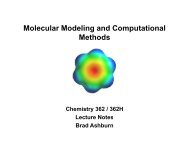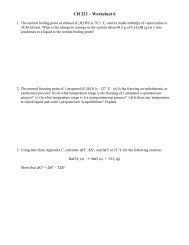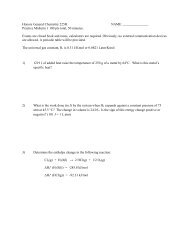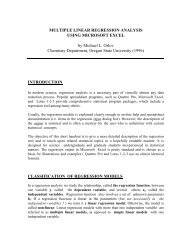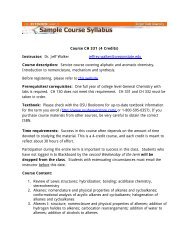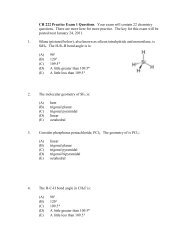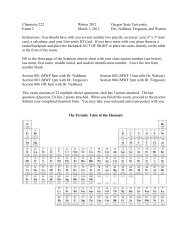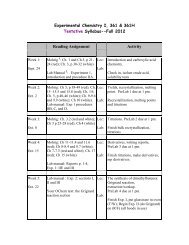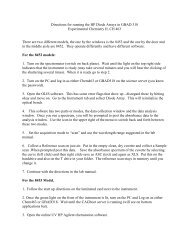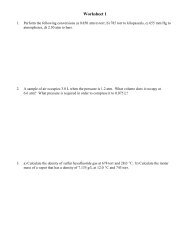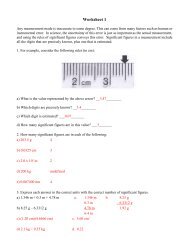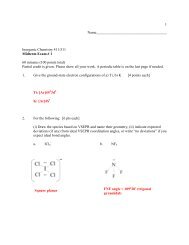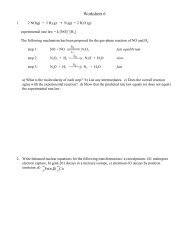You also want an ePaper? Increase the reach of your titles
YUMPU automatically turns print PDFs into web optimized ePapers that Google loves.
<strong>CHAPTER</strong> <strong>24</strong>: <strong>ORGANIC</strong> <strong>CHEMISTRY</strong> 669<strong>24</strong>.63 Cyclohexane readily undergoes halogenation; for example, its reaction with bromine can be monitored byseeing the red color of bromine fading. Benzene does not react with halogens unless a catalyst is present.<strong>24</strong>.64 Marsh gas (methane, CH 4 ); grain alcohol (ethanol, C 2 H 5 OH); wood alcohol (methanol, CH 3 OH); rubbingalcohol (isopropyl alcohol, (CH 3 ) 2 CHOH); antifreeze (ethylene glycol, CH 2 OHCH 2 OH); mothballs(naphthalene, C 10 H 8 ); vinegar (acetic acid, CH 3 COOH).<strong>24</strong>.65 A mixture of cis and trans isomers would imply some sort of random addition mechanism in which onehydrogen atom at a time adds to the molecule.The formation of pure cis or pure trans isomer indicates a more specific mechanism. For example, a pure cisproduct suggests simultaneous addition of both hydrogen atoms in the form of a hydrogen molecule to oneside of the alkyne. In practice, the cis isomer is formed.<strong>24</strong>.66 The asymmetric carbons are shown by asterisks:H H HOH CH 3(a) H C*C C Cl(b) CH * 3 C * C CH 2 OHHClHHH(c)All of the carbon atoms in the ring are asymmetric. Therefore there are five asymmetric carbon atoms.<strong>24</strong>.67 (a) Sulfuric acid ionizes as follows:H 2 SO 4 (aq) ⎯⎯→ H + (aq) + HSO 4− (aq)The cation (H + ) and anion (HSO 4− ) add to the double bond in propene according to Markovnikov’srule:CH 3 CH CH 2 + H + + HSO 4−Reaction of the intermediate with water yields isopropanol:CH 3OSO 3 HCHCH 3OSO 3 HOHCH 3CCH 3 + H 2 O CH 3CCH 3 + H 2 SO 4HHSince sulfuric acid is regenerated, it plays the role of a catalyst.(b)The other structure containing the −OH group isCH 3 −CH 2 −CH 2 −OHpropanol(c)From the structure of isopropanol shown above, we see that the molecule does not have an asymmetriccarbon atom. Therefore, isopropanol is achiral.



